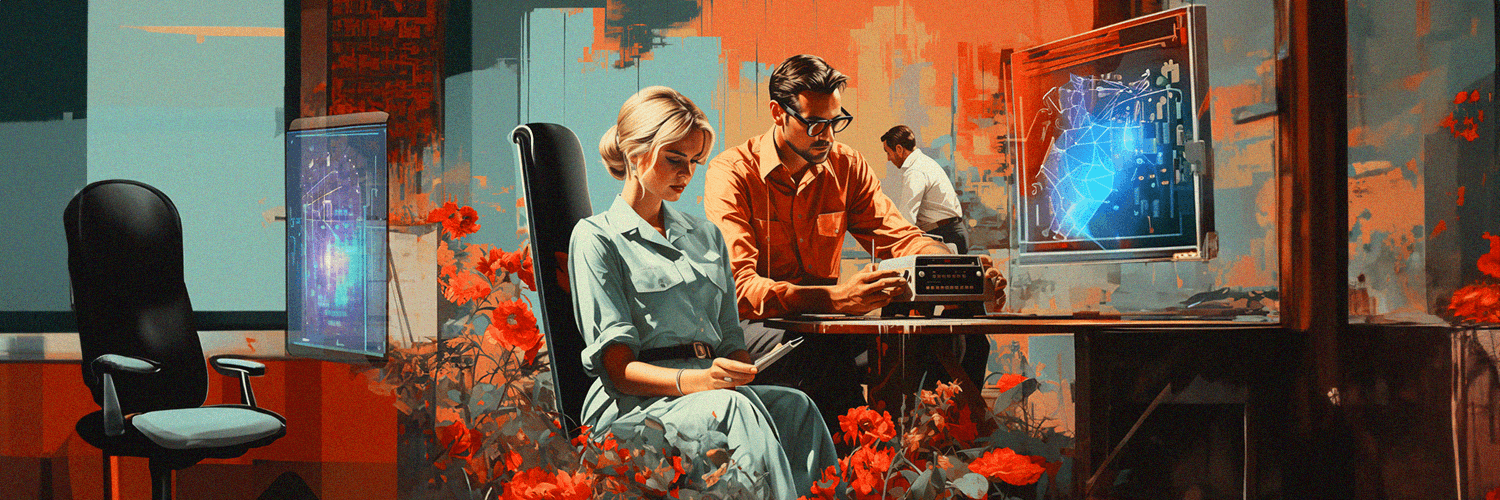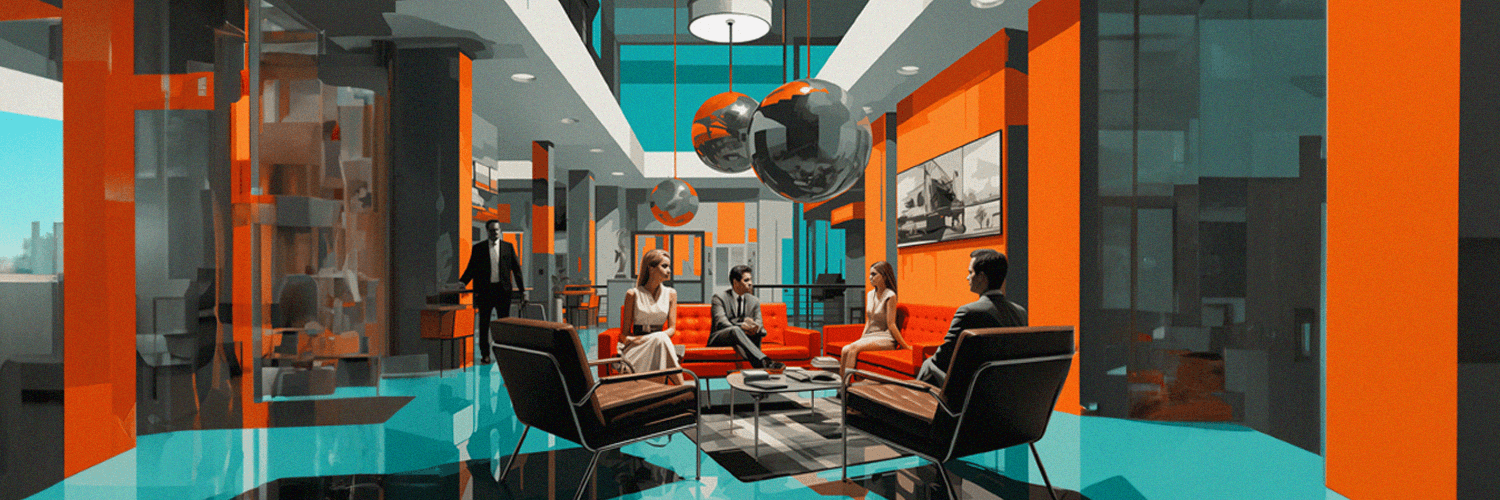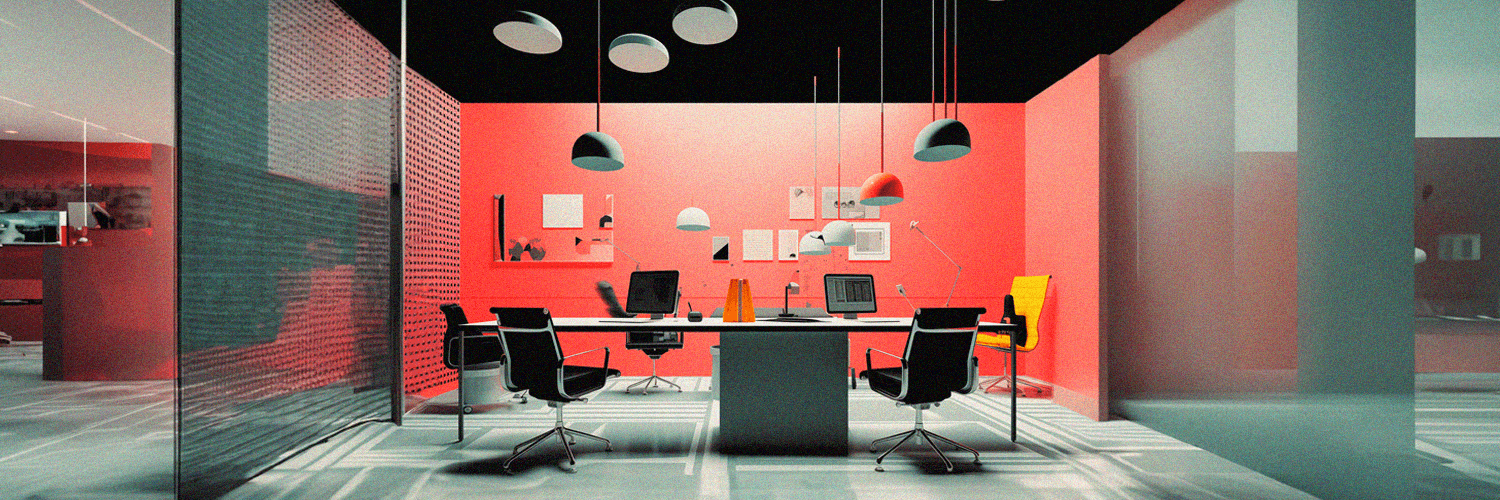In the rapidly evolving corporate landscape, the management of workspace has transcended mere room reservations. According to Verdantix Buyer’s Guide: Space And Workplace Management Solutions (2024), contemporary workspace software solutions offer a multifaceted approach that extends far beyond traditional space monitoring and booking tools. Today's leading-edge technologies redefine the boundaries of workspace management, offering a comprehensive array of functionalities aimed at optimizing not only space utilization but also enhancing the overall employee experience.
This article takes you into this transformative journey and resurfaces the diverse dimensions of modern workspace management technology.
TL;DR:
- Workspace management tech has evolved beyond room reservations, offering multifaceted solutions for optimizing space utilization and enhancing employee experience.
- Features include space monitoring, interactive floor maps, office design insights, mobile apps, digital signage integration, and more.
- These technologies are transforming into comprehensive workplace experience platforms, such as YAROOMS, to foster collaboration, well-being, and productivity.
- Future advancements in AI, IoT, and data analytics promise even more intelligent and personalized workspace management solutions.
Workspace Management Technology: The Basic Definition
To understand the extent to which workplace software solutions are developing nowadays, let’s revisit the definition of such technology.
Workplace management software is a type of software that helps companies manage their workplace. It can track employee productivity, manage schedules, and facilitate communication with employees, among other things, and it can also help make the workplace safer and more efficient.
In their Space and Workspace Management Solutions report, Verdantix defines it as:
“Specialist software that captures information on, and analyses and reports on, the use of rooms, desks and other spaces, to support the processes through which organizations arrange and move staff. The definition also encompasses building occupant-facing software apps for room and space booking, the locating of work colleagues and wayfinding.”
Today’s Workspace Management Tech Has Many Dimensions
The myriad of functionalities attached to nowadays workplace management solutions should make us wonder why modern workspace management tech goes beyond simple room reservations? Here are some possible key functionalities that help build the response:
Deliver Functionality for Monitoring, Analyzing, and Reporting on Space Utilization
A core functionality of space and workplace solutions is centralizing data on how departments and employees occupy spaces. Gone are the days of relying solely on manual headcounts or outdated spreadsheets to understand how office spaces are used. Today’s solutions can centralize data on how departments and employees occupy spaces. They can track both static and dynamic usage data, providing insights from assigned seats on floor plans to real-time information pulled from access control systems, occupancy sensors, and booking systems.
Users can often visualize these data on digital floor plans and send space utilization reports to executives. For example, if you want to be able to track your organization's performance and identify areas for improvement, solutions like YAROOMS gives you clarity on metrics like average office space utilization, number of spaces booked, overall satisfaction levels, and more. Whether it's identifying underutilized areas or optimizing high-traffic zones, these insights empower organizations to make informed decisions about their workspace allocation strategies.
Incorporate Space Management Tools, Such as Interactive Floor Maps and Wayfinding
Another dimension of modern workspace management technology is its incorporation of space management tools, such as interactive floor maps and wayfinding functionalities. These tools not only streamline the booking process but also enhance the overall workplace experience. Interactive floor maps allow employees to easily locate available spaces, whether it's a meeting room for a brainstorming session or a quiet corner for focused work. Wayfinding functionalities guide employees through the office space, reducing time spent searching for meeting rooms or colleagues.

Interactive floor map and wayfinding in action: YAROOMS Workplace Experience Platform, paired with Mappedin's mapping tech, offers precise, real-time navigation around the office.
With hybrid work here to stay, your workspace is only going to get more and more dynamic – so interactive office maps are a useful tool that helps your team (as well as guests) navigate your office, save time, collaborate better, and be more efficient no matter how much your office map shifts and changes.
Empower Decisions on Office Design and Space Downsizing
Workspace management technology also empowers organizations to make informed decisions about office design and space downsizing. By analyzing data on space utilization and employee preferences, organizations can identify opportunities to optimize their office layout. This may involve redesigning floor plans to accommodate changing work patterns, implementing hot desking initiatives to maximize flexibility, or consolidating underutilized spaces to reduce real estate costs. With the ability to visualize and simulate different scenarios, decision-makers can assess the potential impact of these changes before implementation, ensuring that they align with the organization's goals and objectives.
Offer Employee Mobile Applications and Integration with Workplace Communication Tools
Moreover, modern workspace management solutions offer employee mobile applications and integration with workplace communication tools. These applications enable employees to book meeting rooms, reserve desks, or request facilities maintenance directly from their smartphones, enhancing convenience and accessibility. Integration with workplace communication tools, such as Slack or Microsoft Teams, further streamlines the booking process by allowing users to initiate bookings directly within their preferred communication platform.
Don’t forget that employees are your biggest asset! So, by adopting employee-centric tools that adapt to the way teams prefer to work, fit seamlessly with existing processes, are compatible with other technologies used in the organization, are easy to use, offer high searchability, are available on multiple devices and promote collaboration, you can support them while driving better engagement and performance.
Integrate with Digital Signage Offerings, Such as Room Panels and Kiosks
Most solution providers today integrate with digital signage hardware offerings to show the booking status of meeting rooms or desks. Other common integrations include on-site digital kiosks displaying floor plans for employees to navigate and book free desks on site.
Room panels display real-time information about room availability, upcoming meetings, and booking status, allowing employees to quickly identify and book available spaces on the spot. Kiosks placed strategically throughout the office provide a centralized hub for employees to access information, book resources, or request assistance.
It’s no wonder that technological advancements have significantly changed conference room digital signage and will continue to adapt by utilizing upcoming trends shaping their evolution. This will only bring further enhancements to workplace communication dynamics within an increasingly interconnected office environment.
%20(1).png?width=928&height=523&name=Blog%20post%20photos%202%20(2)%20(1).png)
Intuitive and hardware-agnostic, YAROOMS room panel application improves meeting room utilization and enhances workplace experience.
We clearly see that the dimensions of modern workspace management technology extend far beyond basic room reservations. From monitoring space utilization to empowering decisions on office design and promoting environmental sustainability, these solutions offer a comprehensive suite of functionalities to enhance the workplace experience. They are converting into workplace experience platforms aimed at improving both the quality of life for employees and the operational efficiency of businesses.
Workspace Management Solutions Turning into Workplace Experience Platforms
As workspace management technology continues to evolve, it is increasingly turning into comprehensive workplace experience platforms. These platforms go beyond basic space management functionalities to encompass a wide range of features to enhance the overall employee experience. They help manage desk and room booking, visitor management, or hybrid work planning, making your workplace interconnected and catering to all your employees’ needs, regardless of location.
Additionally, they incorporate tools for employee engagement, collaboration, and well-being. Features such as employee feedback mechanisms, wellness programs, and community-building initiatives help create a more inclusive and supportive workplace culture.
Workplace experience platforms introduce a new dimension to connectivity, serving as centralized hubs, consolidating announcements, schedules, and updates. And as technology continues to evolve, the future promises even greater advancements, with AI driving unparalleled enhancements in productivity, collaboration, and overall workplace satisfaction.
The YAROOMS Workplace Experience Platform
At the forefront of this transformation is the YAROOMS Workplace Experience Platform. Designed to empower organizations to create thriving workplace environments, the platform offers a comprehensive suite of tools to enhance every aspect of the employee experience.
YAOOMS leverages cutting-edge technology to offer an intuitive, scalable, and customizable workplace experience platform (featuring desk and meeting room booking solutions, hybrid work planning, visitor management, and workplace analytics) that empowers companies to navigate the complexities of today's workplace environment. The platform provides a holistic solution to meet the diverse needs of modern workplaces while fostering a culture of collaboration, creativity, and well-being, driving employee satisfaction and organizational performance.
The Future of Workspace Management Technology
Looking ahead, the future of workspace management technology holds exciting possibilities. With advancements in AI, IoT, and data analytics, workspace management solutions will become even more intelligent, proactive, and personalized.
Predictive analytics will enable organizations to anticipate space utilization trends and adapt their workplace strategies accordingly. IoT sensors will provide real-time insights into environmental conditions and employee preferences, allowing for dynamic adjustments to the workplace environment. AI will facilitate personalized experiences tailored to individual employee needs, from customized workspace configurations to proactive recommendations for collaboration opportunities.
Summing It Up
In conclusion, modern workspace management technology is undergoing a significant transformation, evolving from basic room reservations to comprehensive workplace experience platforms. The YAROOMS Workplace Experience Platform exemplifies this shift, offering a holistic solution to enhance every aspect of the employee experience. As we look into the future, workspace management technology will continue to evolve, uncovering more possibilities. By embracing these technologies, organizations can create dynamic and adaptive workplace environments that foster collaboration, employee well-being and enhanced productivity.


.png)









